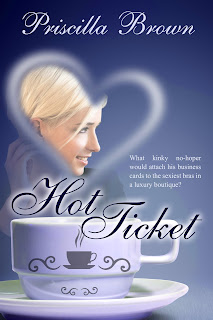 |
| Whitehall Palace |
Whitehall Palace was a sprawling conglomerate of
buildings that made no sense or order. Today, only the Banqueting House
remains.
Part I, A quick
history:
In the 13th century, Whitehall was called York
Place. It was not a palace, but a mansion built by an archbishop between the
cities of Westminster and London. It wasn’t too large then, but over the
centuries, its owners added on to it which accommodated kings, queens, and
their entourages when they visited York Place.
By the 16th century, in the reign of King
Henry VIII, Thomas Wolsey, Archbishop of York, lived in it. He had expanded it
to such a degree that it rivaled most of the king’s palaces. Besides the fact
Wolsey was Catholic, and Henry now rebuked Catholics, to have a minion with a
larger house than his did not sit well. King Henry stripped Wolsey of all power,
then moved into York Place and renamed it Whitehall.
King Henry made his own changes. He updated it until it
encompassed 23 acres and was the largest palace in Europe. He erected merriment
buildings that included a cockpit (turned into a theatre during the reign of King
Charles II), tennis court, and a tiltyard. There was the King Street Gate and
Holbein Gate that allowed the Court to traverse from Whitehall to St James’
Park without ever crossing a public road.
Each king or queen thereafter Henry VIII added to
Whitehall until in 1660 when King Charles II took residence there, it had
become a rambling jumble of chambers, passageways, and staircases connected by
uneven floors that amounted to more than 1,500 rooms. It was also a montage of architectural
designs.
During Queen Elizabeth I’s time, the first of the Banqueting
Houses came into being. Elizabeth I had a large chamber built of timber and
canvas to house entertainments. It occupied the site of the current Banqueting
House, until James I commissioned Inigo Jones to build a solid structure, which
replaced the aging, and dilapidated building. This new one was completed by the
end of James’ reign. It was large with windows on all four sides, an interior
balcony that hugged the walls, and an undercroft that took up the entire base
of the building.
King Charles I commissioned Rubens to paint the Banqueting
House ceiling. He was given £3,000 and a gold chain for the effort. Rubens painted the
canvases and sent them to England for installation on the ceiling, which finished
in 1635.
Rubens’ work effectively put the
Banqueting House out of business. It was feared smoke from torches and candles
would damage the splendor, so a new reception room was built. This was placed
beside the Banqueting House where most of the ceremonial functions took place.
Charles I was executed on a
platform outside the Banqueting House. After this, Whitehall Palace emptied out
during the Civil Wars, but once Cromwell became the new sovereign, Whitehall
filled up, again. After Cromwell’s death, what remained of the Rump Parliament
tried to sell the palace.
Then, with the Restoration of
King Charles II, Whitehall became alive again. As with his father and
grandfather, Charles II wanted to make changes to the already sprawling palace.
He hired Sir Christopher Wren to make it more like Versailles, but all that
planning never came to fruition. He did, however, make new and sumptuous
chambers for his favorite mistress, Barbara Villiers, 1st Duchess of
Cleveland.
After Charles II died, King James
II made changes in the forms of bettering his wife’s apartments, and adding a
new chapel. By the time William III & Mary II took up residence in
Whitehall, its importance was on the decline. King William suffered from
asthma. The palace sat on the banks of the Thames, drafty and damp. He
preferred Kensington Palace. By Queen Mary’s death in 1694, Whitehall was
rarely used.
In 1698, the great rambling palace
of Whitehall burned to the ground. The only structures that remained were the
Banqueting House, the Holbein and Whitehall gates. Today, only the Banqueting
House still stands.
Next time, Other Stuff about
Whitehall.
~~~~~~~~~~~
Sources:
Adrian Tinniswood. By
Permission of Heaven, The true Story of the Great Fire of London. Riverhead
Books, NY, 2003
John Evelyn. Fumifugium:
Or, The Inconvenience of the AER, and SMOAKE of London Dissipated. Together
With some Remedies humbly proposed by J.E. Esq; To His Sacred MAJESTIE, and To
the Parliament now Assemble. Published by His Majesties Command. London
1661






















